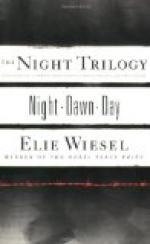Just as the last faint rays of rosy light
Fade from the topmost Himalayan peaks,
And tired nature sinks to quiet rest,
A horseman dashes through the silent streets
Bearing the waiting prince the welcome word
That one short journey of a single day
Divides him from the sweet Yasodhara;
And light-winged rumor spreads the joyful news,
And ere the dawn had danced from mountain-top
O’er hill and vale and plain to the sweet notes
Of nature’s rich and varied orchestra,
And dried the pearly tears that night had wept,
The prince led forth his train to meet his bride,
Wondering that Kantaka, always so free,
So eager and so fleet, should seem to lag.
And in that fragrant garden’s cooling shade,
Where they had parted, now again they meet,
And there we leave them reverently alone,
For art can never paint nor words describe
The peace and rest and rapture of that scene.
Meanwhile the city rings with busy stir.
The streets are swept and sprinkled with
perfumes,
And when the evening shades had veiled
the earth,
And heaven’s blue vault was set
with myriad stars,
The promised signal from the watchtower
sounds,
And myriad lamps shine from each house
and tree,
And merry children strew their way with
flowers,
And all come forth to greet Siddartha’s
bride,
And welcome her, their second Maya, home.
And at the palace gate the good old king
Receives her with such loving tenderness,
As fondest mother, sick with hope deferred,
Waiting and watching for an absent child,
At length receives him in her open arms.
[1]Sinhahamu was an ancestor, said to be the grandfather, of our prince, whose bow, like that of Ulysses, no one else could bend. See notes 24 and 35 to Book Second of Arnold’s “Light of Asia.”
[2]Any one who has read that remarkable work, “Ben Bur,” and every one who has not should, will recognize my obligations to General Wallace.
[3]One may be satisfied with the antiquity of the dance, practically as we have it, from lines 187-8, Book VI. of the Odyssey:
“Joyful they see applauding princes
gaze
When stately in the dance they swim the
harmonious maze.”
[4]I am aware I place Kapilavasta nearer the Vale of Cashmere than most, but as two such writers as Beal and Rhys Davids differ 30 yojanas, or 180 miles in its location, and as no remains have yet been identified at all corresponding to the grandeur of the ancient city as described by all Buddhist writers, I felt free to indulge my fancy. Perhaps these ruins may yet be found by some chance traveler in some unexplored jungle.




